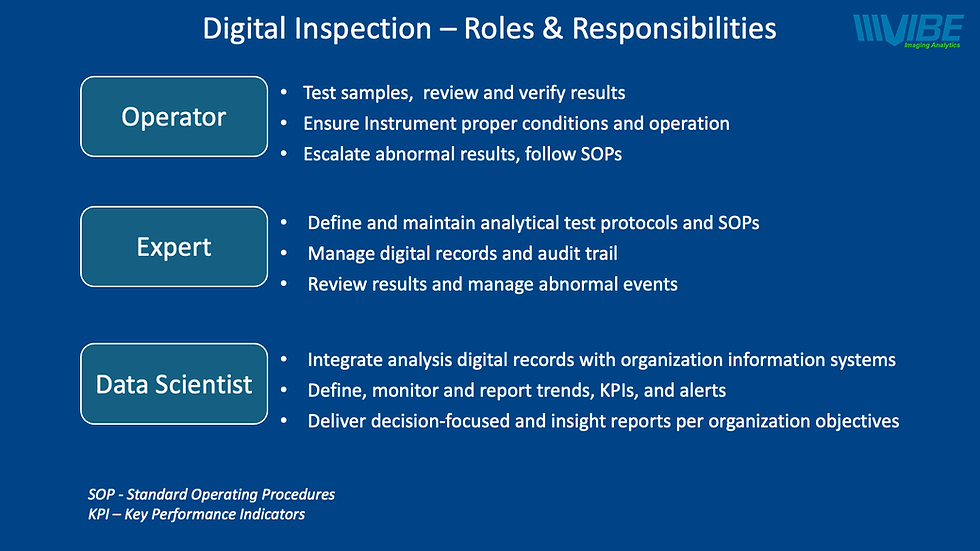Limagrain Cereals Canada Research Leads the Way in Pea Quality Standardization with Innovative Assessment Tool: Digitizing Greenness and Bleaching Levels in Peas
- "The Grain Guru"
- Jul 2
- 3 min read
Limagrain is a leading agricultural company dedicated to advancing seed research and crop quality. With a strong commitment to innovation and collaboration, they provide cutting-edge solutions to improve farming practices and enhance the quality of agricultural products. Their expertise in pulse crops has been instrumental in driving advancements in quality assessment technologies, making them a valuable partner in our mission to refine automated grading systems.
Introduction
Assessing the quality of peas is a fundamental challenge for breeders and food processors. Traditionally, this task has relied on manual inspection, a time-consuming and often inconsistent process. To improve efficiency and accuracy, we at Vibe Imaging Analytics, have developed the Vibe QM3i analyzer, an automated system that classifies and counts peas based on visual defects while also providing key quality indices. Specifically, our tool assesses bleaching in green peas and greenness in yellow peas, offering a reliable and objective grading system. By streamlining quality control, this innovation supports agricultural and food industry professionals in optimizing product standards.This project has been made possible through our close collaboration with Jaenet Ter Schure, a Pulse Breeder from Limagrain Cereals Canada Research. Her expertise has been instrumental in refining and validating the system to ensure it meets real-world breeding needs. Notably, Limagrain’s pulse breeding program is co-funded by the Saskatchewan Pulse Growers (SPG), whose support has helped drive the development of advanced tools for pulse quality assessment. As a valued client, Limagrain Cereals Canada Research has played a crucial role in shaping this technology to set new standards in the industry.
How It Works
Vibe QM3i analyzer leverages advanced image processing to analyze pea samples quickly and reliably. The process follows several critical steps:
Capturing Images: High-resolution images of pea samples are taken under standardized lighting conditions to ensure accuracy.
Smart Analysis: The software scans each pea, identifying damage, shape irregularities, and color variations.
Automated Classification: Based on the analysis, peas are categorized by their visual defects, and the system generates:
A Bleaching Index for green peas, measuring the degree of color fading.
A Greenness Index for yellow peas, identifying immature or stressed peas.
Other damages as: Splits, impurities, Mottled peas, and other colored peas.
Instant Results: The system delivers clear, objective, and consistent grading within seconds, significantly outperforming traditional manual inspection methods.

Figure 1: Examples of Greenness and Bleaching Indexes - The left image illustrates yellow peas exhibiting different levels of greenness. Peas in the top right corner have a lower greenness level, while those in the bottom left display a higher intensity of greenness. The right image showcases green peas with varying degrees of bleaching. The peas on the right side of the image have minimal bleaching, whereas those on the left exhibit a significantly higher level of bleaching. These visual distinctions highlight the variations in color characteristics that are critical for quality assessment.
Why It Matters
This innovative approach offers numerous advantages over conventional grading techniques:
Faster and More Accurate: By reducing reliance on human graders, the system accelerates processing times while maintaining accuracy.
Consistent and Reliable: Automated analysis minimizes variability, ensuring that quality standards are consistently met.
Valuable Insights: The data generated helps breeders and food processors optimize products, leading to better decision-making and improved quality control.
Targeted Color Indices: The bleaching index for green peas and the greenness index for yellow peas address key quality concerns. Retaining vibrant green color in green peas prevents market deductions due to bleaching, while detecting greenness in yellow peas helps avoid downgrades from immature or off-type seeds.
Digital Transformation: The system digitizes all grading data, creating an organized, easily accessible database that enhances traceability and simplifies record-keeping, with customizable certification and reports.
Impact and Future Developments
The Vibe QM3i analyzer is already making a significant impact in pea classification. By automating the grading process, it enhances efficiency, reduces costs, and ensures consistent, high-quality results. Looking ahead, we plan to expand this system to other pulse crops, broadening its applications and delivering even greater value to our partners in the agricultural and food industries.
Authored by Vibe Imaging Analytics in collaboration with Limagrain Cereals Canada Research.




Comments